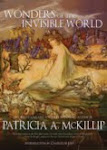Trail is considered intermediate/difficult
Closest Town: Field, BC
This hike takes place in Yoho National Park in British Columbia in western Canada. Today is the second day of a hike that began last week at the Takakkaw Falls.
This hike covers the trail to the Whaleback and on to the Twin Falls campground to stay overnight. The distance to be covered is 11.5km.

[1-Morning sun on peak above Little Yoho Valley Campground]
The Little Yoho is a hanging valley immediately behind President Mountain, above 2000m.

[2-Bright sunshine in morning in the Little Yoho Valley]

[3-Waterfall in Little Yoho Valley near campground in morning light]

[4-Looking up Little Yoho Valley from the Stanley Mitchell Hut]
The Stanley Mitchell Hut is operated by the Alpine Club of Canada. Members can enjoy their stay with sleeping space for 26 in summer (22 in winter), well equipped with a woodstove, propane system for cooking and lighting. The Little Yoho Valley has long had a reputation as an excellent alpine climbing area as well as a magnificent skiing area. The Canadian military used the area during the summer of 1943 as a training site for mountaineering techniques.

[5- Stanley Mitchell Hut kitchen]
The hut has undergone a few renovations, but is relatively the same as it was in 1940. It is presently in excellent condition; a comfortable facility set in beautiful meadow and mountain terrain, and a fine memorial to one of the Club's founders. The Stanley Mitchell hut was designated a Federal Heritage Building in 1997.

[6- Stanley Mitchell hut living room]
Water can be obtained from the spring-fed stream behind the Stanley Mitchell Hut. It is recommended this water be boiled before drinking.
The first 2.5 kms east from Little Yoho is a comfortable hike through a thick forest. Keep a lookout for bears.
The hiker will approach a three-way junction. For the Whaleback Trail take the left turn. From here the trail becomes very steep with switchbacks over loose rock, roots and other obstacles while climbing over Whaleback Mountain.

[7-Whaleback trail]

[8- Whaleback Trail with summit in sight]
The end is close, as there is a glimpse of the trail summit. The Whaleback Trail goes as high as 2300 metres (7,545 ft), the mountain summit is at 2,633m (8,638ft).

[9-Whaleback Trail summit]
The reward on reaching the top is the scenic highlight of the Yoho Valley which is 2 kilometres away. At the top you will enjoy panoramic views of the valley including the Daly Glacier, Yoho Peak, Mt. Daly, Yoho Glacier.
On the other side The Vice-Presdient and The President Mountain (peak on right) can be seen with Emerald Glacier.

[10-The Vice-President and The President, 3,132m (10,246 ft) behind Emerald Glacier]
Another available view is of Mount Des Poilus, named in honour of the million and a half privates in the French army who were killed in the First World War, and the Des Poilus Glacier.

[11-View of south ridge of Des Poilus]

[12-Top of Twin Falls]
This seasonal bridge lies over the river that topples over into the "Twin Falls."

[13-Another view from the bridge looking out over the Yoho Valley]
Farther along the hiker will cross Twin Falls creek above the falls courtesy of a seasonal bridge that is only available in summer. There the hiker can stand at the top of the falls to look across the Yoho Valley.

[14-Whaleback Trail on edge of unprotected cliff 100 metres above the Twin Falls Chalet]
The trail parallels the edge of a cliff where there is a good location to have a lunch break after the strenuous exertion of climbing the Whaleback.
For the descent there are about 4km of steep switchbacks through the forest which will take the hiker to the valley bottom. It is important to be careful going down.

[15-Twin Falls]

[16-Twin Falls lower and streamlet]

[17- Twin Falls Chalet]
To reach the Twin Falls campground, the hiker will pass the Twin Falls Chalet, originally a teahouse built in 1908 by the Canadian Pacific Railway to accommodate travelers in the Canadian Rockies. Yoho National Park now owns the Twin Falls Chalet, operating it as a backcountry lodge open july to September (Labour Day). There is another 60m on a steep descent before you reach Twin Falls campground.
The Twin Falls campground has 8 camping sites with a privy and food storage pole.
If you have time, there is a short hike (2.3km) with an elevation gain of 250m from the campground to the edge of Yoho Glacier.

[18-Near edge of Yoho Glacier]
Reservations must be made three months in advance to stay overnight in the backcountry campgrounds. A wilderness pass must also be purchased ($9.90 overnight or $69.35 seasonally) to stay overnight in Yoho National Park. These may be purchased through ParksCanada.
Research: field.ca/yohonationalpark; alpineclubofcanada.ca; ParksCanada; wikipedia.
Photo Credits: [1]-inottawa CC=flickr, [2][3][4]-brilang CC=nc-sa-flickr, [5][6][10]-wikipedia, [7][8][14][15]-damclean CC=nc-sa-flickr, [9][12]-pinkcanoe CC=nc-nd-flickr, [11][16]-mikewarren CC=nc-sa-flickr, [13][17]-jason rust CC=nc-nd-flickr, [18]-jondon CC=nc-nd-flickr.
 [1-Normal School on Gould Street circa 1859]
[1-Normal School on Gould Street circa 1859] [2-Sir John Beverley Robinson]
[2-Sir John Beverley Robinson] [3-Dr. Adolphus Egerton Ryerson, circa 1850]
[3-Dr. Adolphus Egerton Ryerson, circa 1850] [4-Toronto Normal School circa 1907]
[4-Toronto Normal School circa 1907]




























































